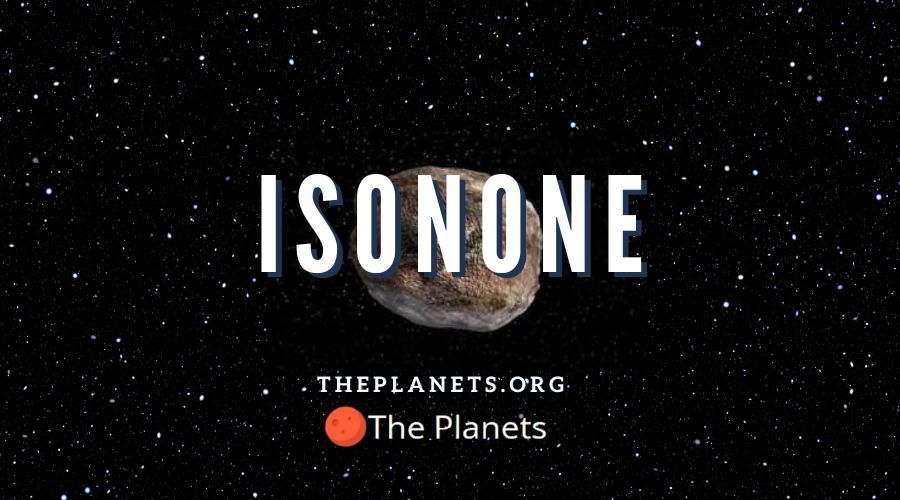
A Member of the Carme Group
The moon Isonoe is thought to have once been part of a much larger asteroid that was dragged into the orbit of Jupiter and collided with another celestial object. The collision caused a splintering of the asteroid that would eventually become the moon, Carme that retains around 99 percent of the original mass of the asteroid. Most moons that were born from asteroid collisions have a mysterious past, but Isonoe is theorized to have been created from a D-type asteroid from the Hilda or Jupiter Trojans family of asteroids.
An eccentric orbit
The orbit of Isonoe is eccentric, which means the moon does not circularly move around Jupiter. Instead, the orbit of Isonoe is more of an oval shape and is affected by the tidal movement of Jupiter. The moon sits around 14.4 million miles from the surface of Jupiter and takes approximately 726 Earth days to complete a single orbit of Jupiter.
The size and coloring of Isonoe
The moon of Isonoe is not a regular spherical shape as it is too small to be affected by the gravity of Jupiter is changing its irregular shape. Like the majority of smaller moons around Jupiter, the problem of obtaining high-quality images has stopped experts from understanding the exact shape of Isonoe. It is thought Isonoe has a radius of just 1.1 miles and has a red coloring similar to the other moons in the Carme Group. Most of the members of the Carme group are colored light red apart from the moon, Kalyke.
The Discovery of Isonoe
In the first years of the 21st-century, a number of the moons of Jupiter were identified by the astronomers at the University of Hawaii’s Mauna Kea Observatory. Isonoe is included in this group of discovered moons by the team of Scott S. Shepherd, David C. Jewitt, Yanga R. Fernandez, and Eugene Magnier. These astronomers discovered Isonoe on November 23, 2000, and would give the moon the name S 2000/J6.
Giving a Name to the Moon
The naming of one of Jupiter’s moons is not as simple as just thinking of a name that appears to be entertaining or informative. Instead, a standardized way of naming moons was introduced by the International Astronomical Union to ensure each moon could be easily identified by its name alone. Isonoe moves in a retrograde orbit, which means it travels in the opposite direction to the way Jupiter spins. A retrograde moon is required to be given a name ending with a letter e. As the traditional names for Jupiter’s moons come from Greek mythology tales of ancient history. The Greek story of Isonoe sees her as the daughter to Danaus who was condemned to Hades where they were required to fill a bottomless pit with water for eternity.